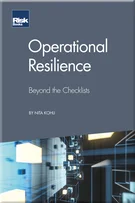Challenges and solutions for student loans
Tom Russo
Introduction
An overview of CECL: setting the context
Outlining the most impactful assumptions and challenges under CECL: an auditor’s view
Outlining the most impactful assumptions and challenges under CECL: a banker’s view
A banking industry perspective on key CECL decisions
Challenges and solutions for wholesale portfolios
Challenges and solutions for retail mortgage portfolios
Challenges and solutions for retail credit card portfolios
Challenges and solutions for student loans
Challenges and solutions for securities portfolios
The evolution of purchased loan accounting: from FAS 91 to the CECL transition
Challenges and solutions for qualitative allowance
Challenges and solutions: an auditor’s point of view
Early view of CECL integration into stress testing: practical approaches
Too many cooks in the kitchen: mastering the art of managing CECL volatility
Beyond CECL: rethinking bank transformation
Data collision: efficient lending under CECL
Cutting through the hype: how CECL is impacting investor views of procyclicality, credit analysis and M&A
Concentration risk: the CECL magnifying glass
Closing thoughts
Student loans are one of the largest consumer debt asset classes in the US, with roughly USD1.68 trillion in outstandings as of Q1–2020. Student loans are unsecured and are designed to help borrowers cover expenses such as tuition, books and supplies for post-secondary education. In the US, there are two main types of student loans: federal student loans and private student loans. Federal student loans represent the majority of outstanding student loan debt, and account for approximately 92% of the total student loan debt outstanding, while private student loans represent the remaining portion (see Figures 8.1 and 8.2).
Federal student loans have limited underwriting criteria and have been originated by the federal government under the Federal Direct Student Loan Program since July 1, 2010. These loans are held directly by the federal government, and CECL is not applicable. Previously, federal student loans were issued by private lenders under the Federal Family Education Loan (FFEL) program, with most of these loans being guaranteed by the federal government. CECL is applicable to FFEL loans, but the impact is rather minor due to the federal guarantee that insures private
Copyright Infopro Digital Limited. All rights reserved.
As outlined in our terms and conditions, https://www.infopro-digital.com/terms-and-conditions/subscriptions/ (point 2.4), printing is limited to a single copy.
If you would like to purchase additional rights please email info@risk.net
Copyright Infopro Digital Limited. All rights reserved.
You may share this content using our article tools. As outlined in our terms and conditions, https://www.infopro-digital.com/terms-and-conditions/subscriptions/ (clause 2.4), an Authorised User may only make one copy of the materials for their own personal use. You must also comply with the restrictions in clause 2.5.
If you would like to purchase additional rights please email info@risk.net










